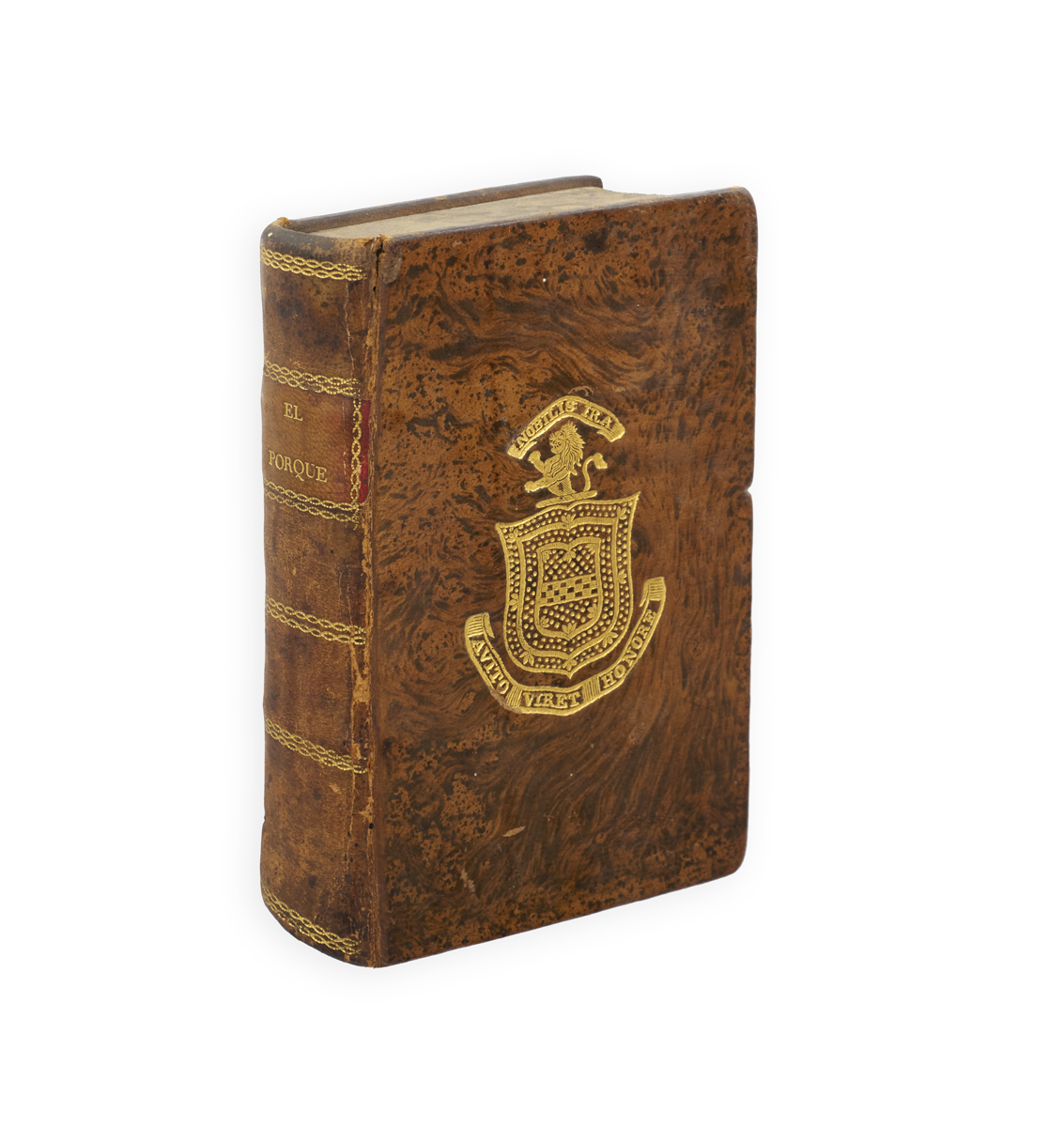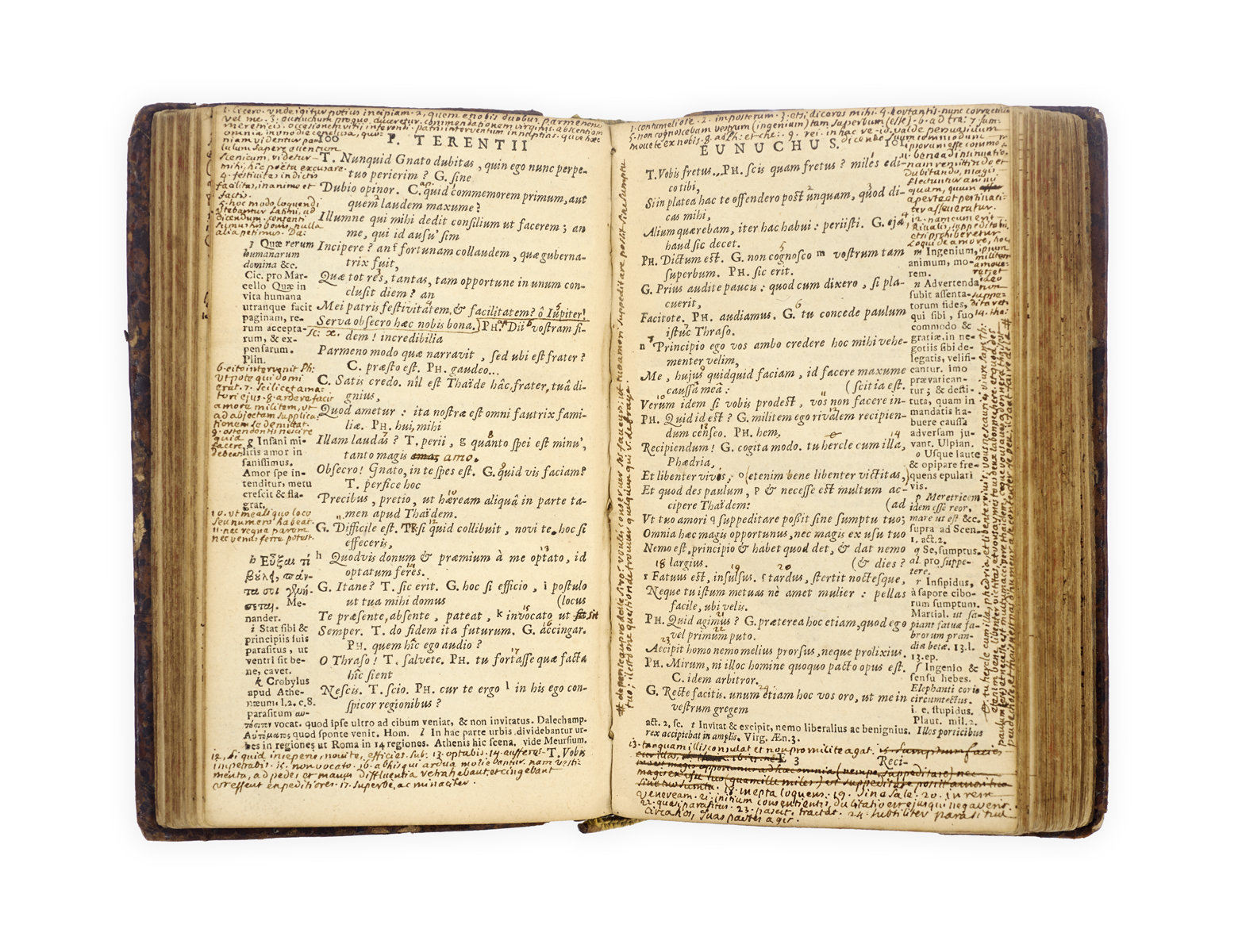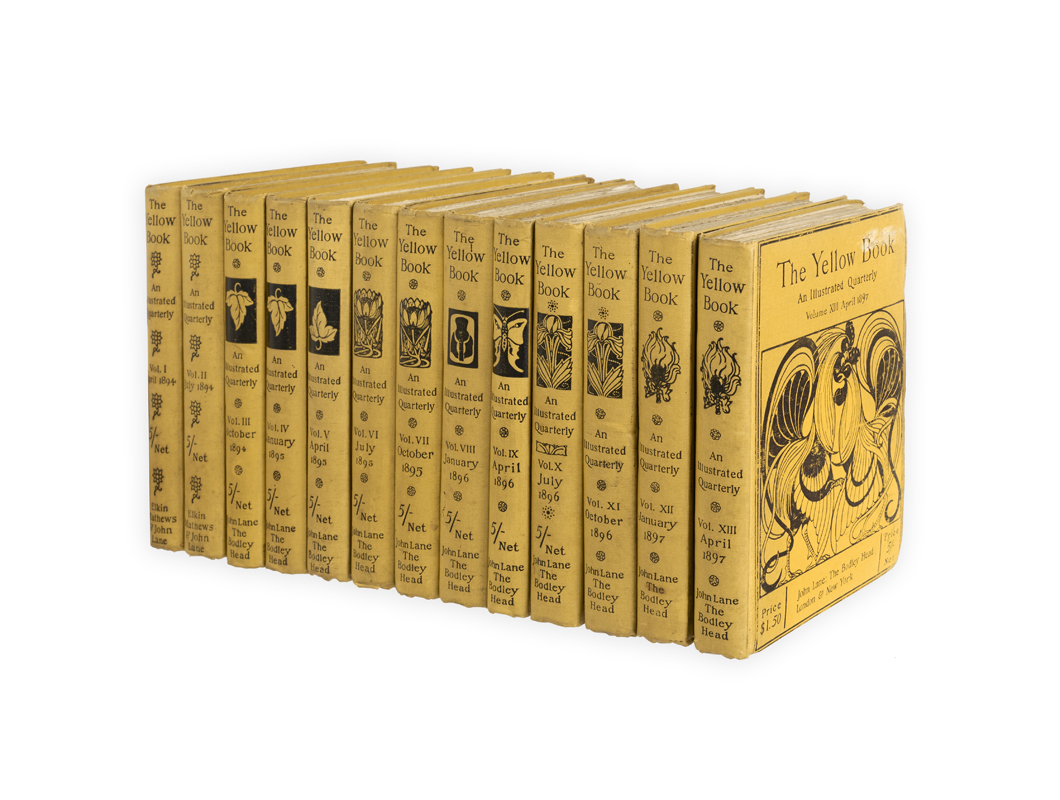

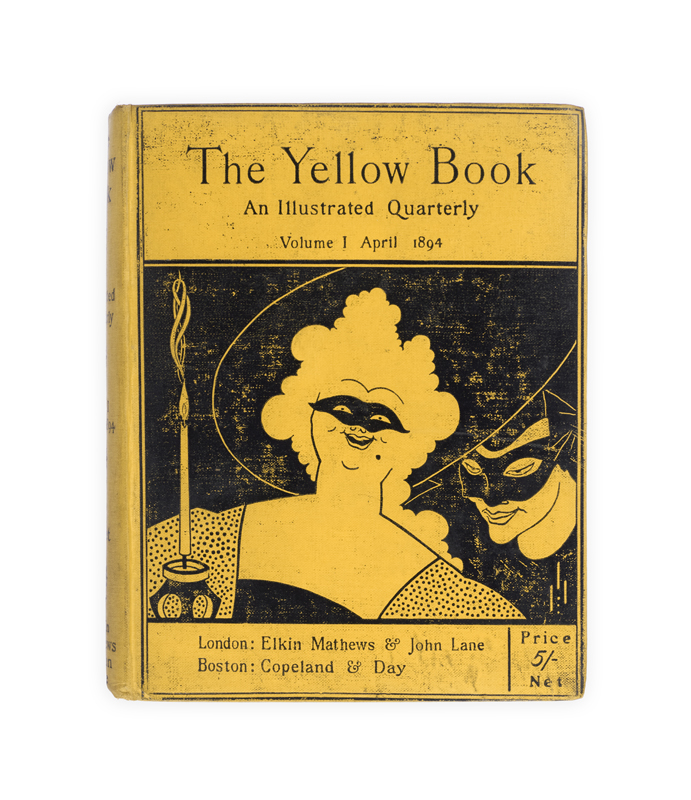
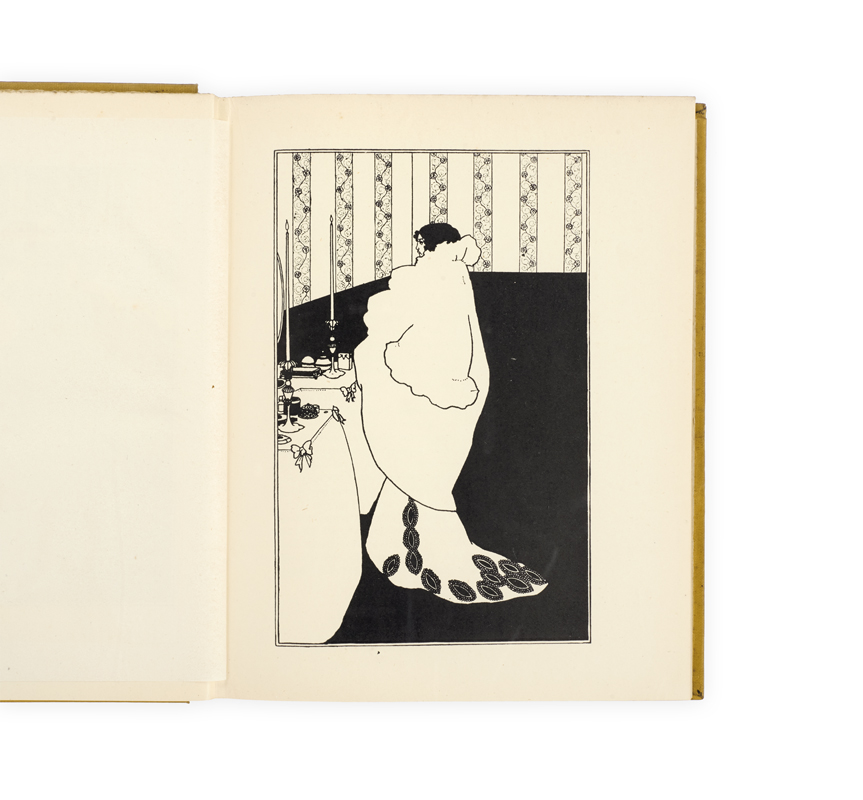

DECADE-DEFINING DECADENCE
‘TO BE APPRECIATED ONLY BY THE DILETTANTE’
BEARDSLEY, Aubrey, art editor; Henry HARLAND, literary editor.
The Yellow Book. An Illustrated Quarterly. Volume I [– XIII].
London [– & New York], Elkin Mathews & John Lane [– John Lane, The Bodley Head], and Boston, Copeland & Day, April 1894 [− April 1897].
Thirteen volumes, small 4to; illustrated throughout with black and white plates with tissue-guards; lightly toned with sporadic foxing; partly unopened, in publisher’s original pictorial yellow cloth blocked in black; spines a little darkened with rubbing to covers, extremities a little worn, corners bumped, but a very good set.
An excellent set of the first edition of The Yellow Book, the decade-defining illustrated quarterly that captured the spirit of decadence and aestheticism and gave its name to ‘the yellow nineties’.
Founded in 1894 by Aubrey Beardsley and his friend Henry Harland, The Yellow Book was intended as an antidote to ‘conventional magazines’. The quarterly showcased a wide range of literary and artistic genres of the late Victorian avant-garde − poetry, short stories, essays, illustrations, portraits, and reproductions of paintings − promoting the values of decadence and aestheticism. Published by John Lane, and with Beardsley and Harland as art and literary editors, it was designed to be provocative, experimental, and to be read by an enlightened bourgeois audience. As Beardsley explained in a letter to Robert Ross, The Yellow Book sought to provide a platform for the ‘many brilliant story painters and picture writers [who] cannot get their best stuff accepted … because they are … perhaps a little risqué’ (Beardsley, Letters, p. 61). One contemporary reviewer in The New York Times noted that the quarterly was ‘a “cheeky” performance, to be appreciated only by the dilettante, and not written for Philistines …’ (p. 23).
The striking yellow cloth covers blocked in black, first proposed by Beardsley, were widely thought to anticipate salacious content within, recalling the yellow covers of French and European novels of an erotic or illicit nature. For Oscar Wilde, Beardsley’s design for the first volume’s cover depicted ‘a terrible naked harlot smiling through a mask− and with Elkin Matthews written on one breast and John Lane on the other’ (Beerbohm, Letters, p. 94).
The Yellow Book’s association with the scandalous peaked just one year into its publication. In April 1895, it was widely reported that Wilde was carrying a copy of The Yellow Book when he was arrested at the Cadogan Hotel. The ensuing furore surrounding Wilde’s trial led to a backlash against all those associated with Wilde, his decadent values, and in consequence The Yellow Book itself. The journal’s reputation was irrevocably damaged and, in an attempt to placate critics, Beardsley was forced to resign after just four issues (although Lane was commissioning his works again within a month).
The Yellow Book continued with Lane at the helm, assisted by the artist Patten Wilson. While the volumes following Beardsley’s departure have often been read as more conventional than their precedents, they are notable for including work by women writers and artists, among them Ella D’Arcy and Ethel Colburn Mayne (who also served as Harland’s subeditors), Ethel Reed, and the sisters Netta, Mabel, and Nellie Syrett. Over its four-year run, The Yellow Book provides a glittering catalogue of turn-of-the-century literati, including writing by Max Beerbohm, Henry James, and H.G. Wells and the artistic work of Beardsley and the Birmingham School, Walter Sickert, John Singer Sargent, and others.
See The Letters of Aubrey Beardsley (1970), Letters of Max Beerbohm, 1892−1956 (1988), and ‘The Yellow Book’ in The New York Times (19 August 1894).
